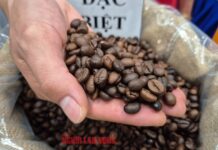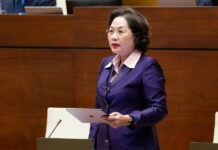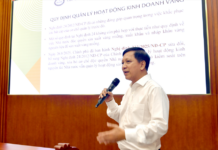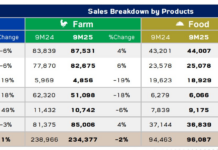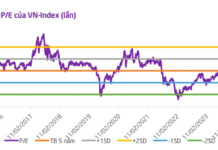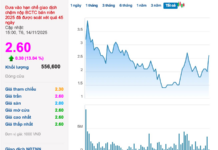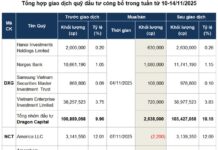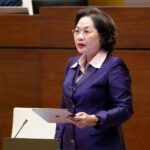Mr. Nguyen Do Anh Tuan, Director of the International Cooperation Department, Ministry of Agriculture and Rural Development, said that the Project “Sustainable development of 1 million ha of high-quality and low-emissions rice specialization associated with green growth in the Mekong Delta by 2030” (abbreviated as the Project) was approved by the Prime Minister at the end of 2023. If successful, it will be a revolution in rice production.
POTENTIAL FOR EMISSION REDUCTION AND CARBON CREDITS
According to statistics, agricultural production activities in Vietnam emit about 80 million tons of CO2 and methane (CH4) into the environment each year, accounting for over 30% of the country’s total CO2 emissions. Of this, rice production accounts for about 50% of total agricultural emissions. Therefore, the Project has set several targets for the rice industry. These include reducing input costs by 30%, contributing to a 20% reduction in rice production costs for farming households, and increasing farmers’ profit margins by 50%; as well as contributing to a 10% reduction in greenhouse gas emissions.
Mr. Nguyen Do Anh Tuan said that according to estimates, the Project will increase the value of Vietnam’s rice industry by about VND 21 trillion per year (equivalent to about USD 840 million per year) compared to before. This figure includes: reducing rice production costs (VND 9.5 trillion per year); increasing product selling prices (VND 7 trillion per year); selling carbon credits (about VND 2.5 trillion per year); and utilizing by-products (VND 2 trillion per year).
“Especially, this is the largest low-emission rice production program in the world so far. The plan of the Project is that by 2025, 13 provinces and cities in the Mekong Delta will plant 180,000 ha of low-emission rice and pilot carbon credits for the region that meet the standards. By 2030, the region will expand to an additional 820,000 ha of low-carbon rice. The goal is to sell carbon credits in the rice industry worth VND 2,500 billion per year,” said Mr. Tuan.
“Reducing emissions associated with green growth is one of the objectives of the Project ‘Sustainable development of 1 million ha of high-quality and low-emission rice specialization associated with green growth in the Mekong Delta by 2030’. This is not just a technical project to reduce production costs, but also an opportunity to reassess the production capacity of the key agricultural region of the Mekong Delta from the perspective of the rice industry.”
Mr. Le Minh Hoan, Minister of Agriculture and Rural Development.
Research conducted by the International Rice Research Institute (IRRI) shows that if low-carbon rice cultivation is implemented on 1.9 million ha of rice fields, it has the potential to help the Mekong Delta’s rice industry reduce greenhouse gas emissions by nearly 11 million tons of CO2e (CO2 equivalent) per year by 2030. In addition, reusing 70% of straw for other forms will reduce about 50% of greenhouse gas emissions compared to straw burning.
To implement the process of evaluating carbon credits in the rice industry, the Plant Protection Department (Ministry of Agriculture and Rural Development) coordinated with the Institute of Agricultural Environment to develop a plan to establish and perfect the Measurement, Reporting, and Verification (MRV) system for emission reduction. On July 4, 2024, the Department submitted to the Ministry of Agriculture and Rural Development for approval the Plan for implementing MRV on pilot models under the Project “Sustainable development of 1 million ha of high-quality and low-emission rice specialization associated with green growth in the Mekong Delta by 2030”. The MRV system consists of three main parts: reducing input of nitrogen fertilizer and plant protection drugs; applying alternate wetting and drying (AWD) irrigation method; and managing and treating straw after harvest.
Ms. Ha Thi Nga, President of the Vietnam Women’s Union, shared: “The dual goal of the Project is to help farmers reduce greenhouse gas emissions. By practicing correctly, farmers will have an additional source of income from carbon credits. This will not only increase farmers’ income but also help Vietnamese rice gain more priority when exported to world markets. The successful implementation of the Project will help enhance the prestige of Vietnamese rice.”
According to Minister of Agriculture and Rural Development Le Minh Hoan, the goal of 1 million ha of high-quality rice is not just about economics. Through practical activities, the Project is expected to restructure the ecosystem of the entire industry, including the cultivation methods of the people, the system of traders, and the organization of linkages in cooperatives…
CARBON CREDIT PRICE HAS NOT BEEN SPECIFIED
Commenting on the prospects for selling carbon credits in the rice industry, many experts are being cautious. Dr. Tran Minh Hai, Vice Principal of the School of Public Policy and Rural Development (Ministry of Agriculture and Rural Development), said that the Project’s greatest economic benefit is not just in selling carbon credits, but in the fact that the production process forces a reduction in rice production costs and an increase in rice quality.
Regarding the issue of emission reduction and sale of carbon credits in the rice industry, Dr. Tran Minh Hai said that it is necessary to understand the correct mechanism of emission reduction in the Project. According to calculations by scientists, on average, producing 1 ton of rice will emit 1 ton of greenhouse gases CO2. In this Project, we apply the production process of the Ministry of Agriculture and Rural Development (reducing seeds, reducing fertilizer, reducing plant protection drugs, applying alternate wetting and drying irrigation, removing straw from the field, etc.) then we will be able to reduce emissions by 25-30%.
“We use monitoring and measurement equipment, and if it is confirmed that the new production process has reduced emissions by 2.5 tons of CO2/ha/crop, then they will confirm that we have created 2 carbon credits,” said Dr. Tran Minh Hai.
“The cost for farmers to invest in low-emission rice production is very high compared to normal rice cultivation, so if carbon credits are sold at a low price, rice farmers will lose money instead of making a profit. Therefore, we should not participate in the carbon market in the rice sector at all costs.”
Dr. Tran Minh Hai, Vice Principal of the School of Public Policy and Rural Development.
Dr. Hai said that up to this point, no country in the world has sold rice carbon credits, and no country has determined the price of 1 rice carbon credit. In principle, the price of 1 carbon credit is determined based on the investment cost to create that carbon credit. Therefore, it is impossible to say whether a price of $10, $20, or $30 per credit is expensive or cheap.”
Currently, the Ministry of Agriculture and Rural Development of Vietnam is coordinating with experts from the Carbon Finance Payment Fund (TCAFT), the World Bank (WB), and Vietnamese agencies to determine the cost of forming a rice carbon credit, but the exact price of a carbon credit has not yet been determined.
The price of a rice carbon credit should be based on the following costs: (1) agricultural extension costs for the people; (2) monitoring costs per ha per year; (3) general management costs of the project; (4) costs to support investment in the necessary infrastructure for cooperatives in terms of infrastructure and equipment to provide other market incentives; (5) costs of investing in improving irrigation infrastructure; (6) training community agricultural extension staff; (7) developing a measurement, reporting, and verification (MRV) system; (8) maintenance and support costs for the MRV system; (9) validation and verification costs.
Dr. Tran Dai Nghia, Head of the Economics, Finance, and Natural Resources and Environment Department, Institute of Policy and Strategy for Agriculture and Rural Development, said that the goal of the global carbon market is to create a new financial channel to fulfill emission reduction commitments, not to create a new industry. If we go in the direction of investing and brokering to sell carbon credits, we are going in the wrong direction. Because this is a non-physical product, it is time-bound, and if it is not sold by a certain time, the product will “disappear.”
For the rice industry to be able to sell carbon credits in the future, Dr. Tran Dai Nghia made five recommendations.
First, perfect the legal framework for the operation of the domestic and international carbon market.
Second, build a national and international emission and reduction registration system, with priority given to testing in the forestry sector.
Third, prioritize projects that create carbon credits.
Fourth, develop many projects to reduce emissions, avoid emissions, and absorb greenhouse gases to access results-based finance (RBCF) sources such as the Transformational Carbon Asset Facility (TCAF), the Lowering Emissions by Accelerating Forest Finance (LEAF) Alliance, and the Green Climate Fund (GCF).
Fifth, allow the pilot exchange of carbon credits on a voluntary trading floor…
https://postenp.phaha.vn/chi-tiet-toa-soan/tap-chi-kinh-te-viet-nam

The Provincial Frontier Now an Urban Area of Distinction: A Future Centrally-Administered City
The metropolitan area is the proposed site for the establishment of two new districts, which will be directly under the jurisdiction of the centrally-controlled municipality.


